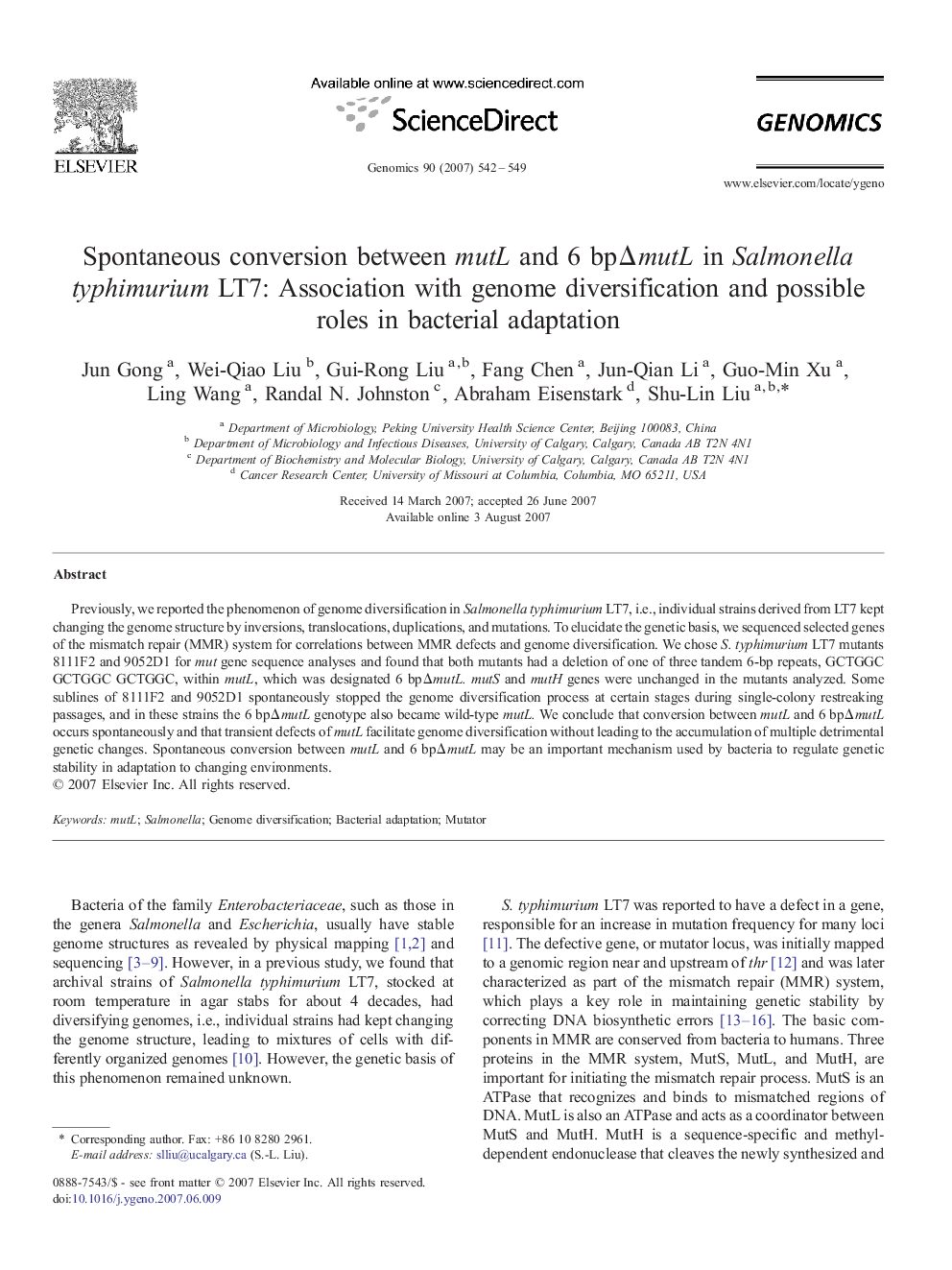| Article ID | Journal | Published Year | Pages | File Type |
|---|---|---|---|---|
| 2821606 | Genomics | 2007 | 8 Pages |
Previously, we reported the phenomenon of genome diversification in Salmonella typhimurium LT7, i.e., individual strains derived from LT7 kept changing the genome structure by inversions, translocations, duplications, and mutations. To elucidate the genetic basis, we sequenced selected genes of the mismatch repair (MMR) system for correlations between MMR defects and genome diversification. We chose S. typhimurium LT7 mutants 8111F2 and 9052D1 for mut gene sequence analyses and found that both mutants had a deletion of one of three tandem 6-bp repeats, GCTGGC GCTGGC GCTGGC, within mutL, which was designated 6 bpΔmutL. mutS and mutH genes were unchanged in the mutants analyzed. Some sublines of 8111F2 and 9052D1 spontaneously stopped the genome diversification process at certain stages during single-colony restreaking passages, and in these strains the 6 bpΔmutL genotype also became wild-type mutL. We conclude that conversion between mutL and 6 bpΔmutL occurs spontaneously and that transient defects of mutL facilitate genome diversification without leading to the accumulation of multiple detrimental genetic changes. Spontaneous conversion between mutL and 6 bpΔmutL may be an important mechanism used by bacteria to regulate genetic stability in adaptation to changing environments.
